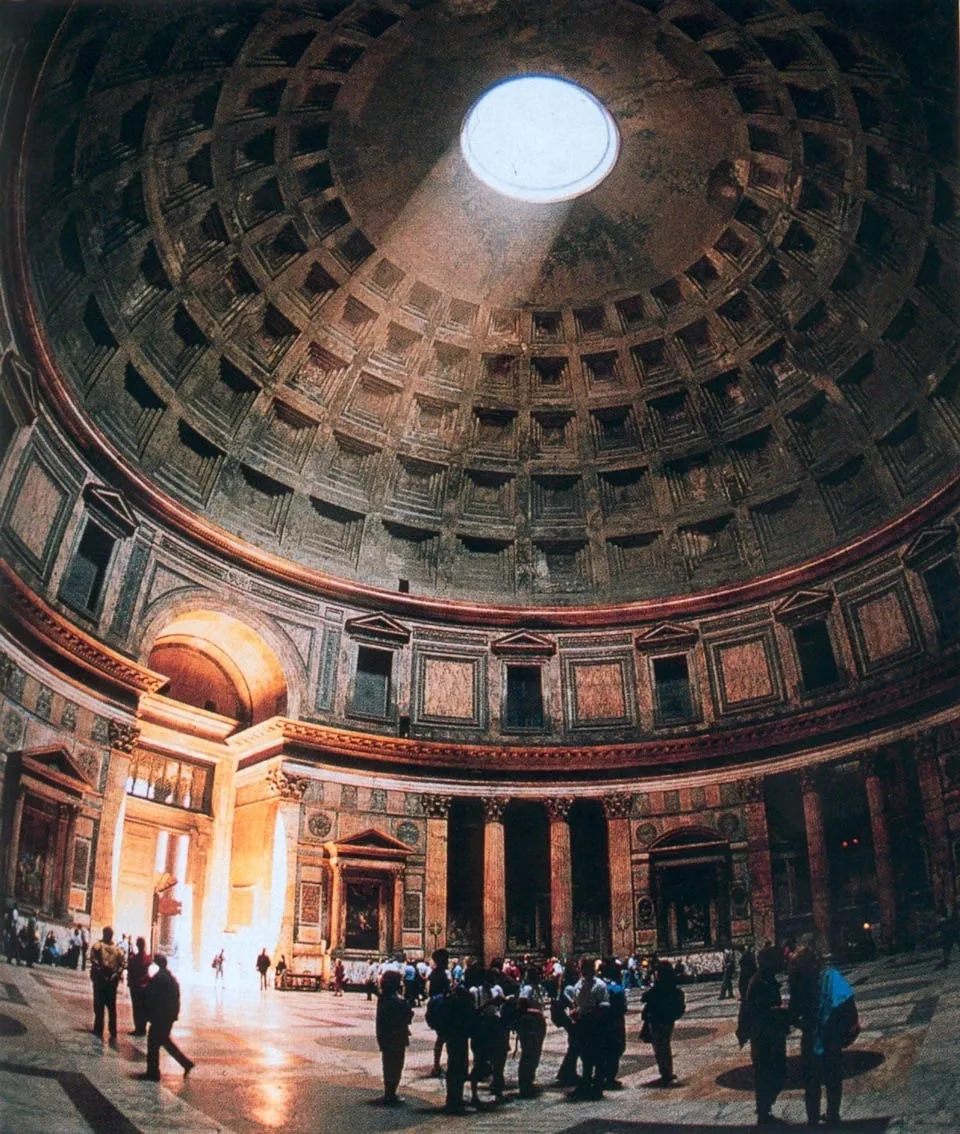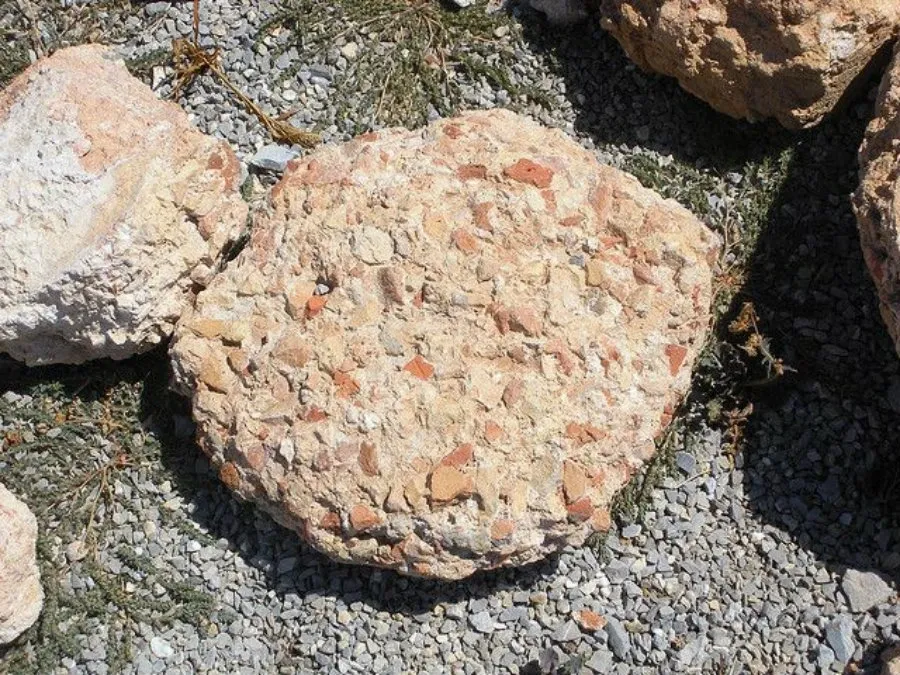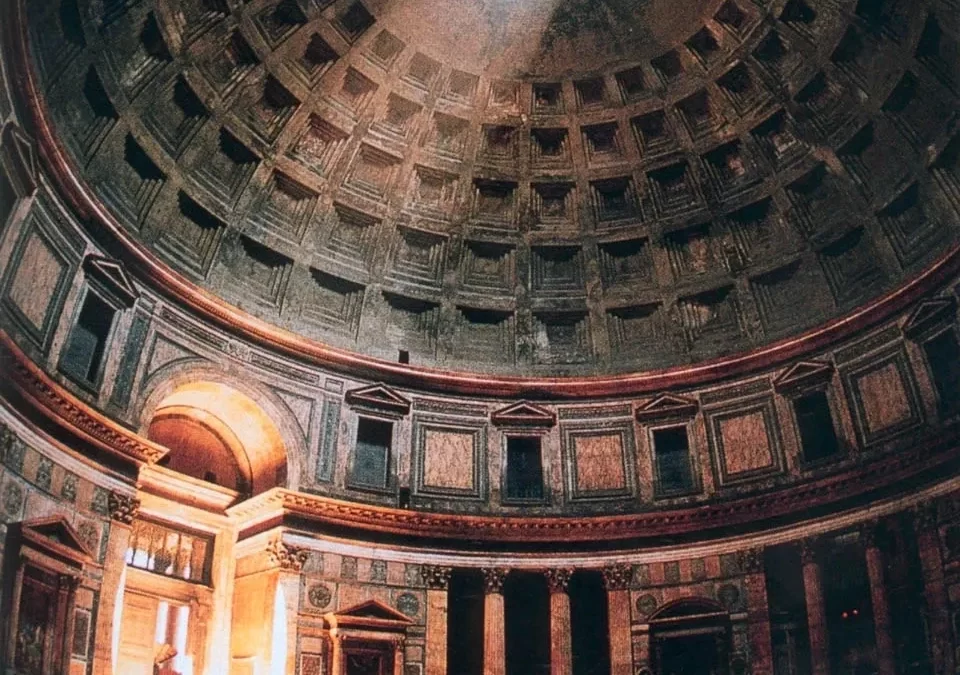
Inside of the Roman Pantheon
Their Republic ran on slave labor from conquered peoples, and the Empire was hardly different.
So naturally, when I see the Wikipedia article referencing someone else’s statements without properly citing them as saying, “a candidate for the most durable building material in human history,” I get curious.
We know about Roman Concrete for a few main reasons. The first is the literal evidence left behind by the Romans in the form of some of their most majestic and in-your-face monuments like the dome of the Pantheon in Rome. As astonishing as it may seem, that hulking hunk of grey isn’t stone, but is in fact concrete. No rebar, no internal structural support whatsoever, actually. Roman engineers flexed on us modern plebs by pouring their concrete mix into a cast, similar to how they would a bronze sculpture. The dome is all one piece, and the weight is borne towards the center hole at the top, called a keystone hole. Roman engineers also pioneered keystone arches and took that concept a bit further with that keystone that serves as a glimpse of the modern Roman sky.

Portrait of Vitruvius, Author of De Architectura

Leonardo Da Vinci's Vitruvian Man
As this article is growing rather long-winded, I’ll briefly discuss the modern issues we run into with Roman Concrete, its counterpart Portland Cement, and what that means for the future.
Many people state that the recipe was lost, though I just wrote it down above in not near enough detail to be considered scholarly, but enough to be considered concise. Many modern contractors, archaeologists, and chemical engineers speculate about the use of Roman Concrete in the modern day, essentially surmising that it has a plethora of environmental benefits considering the fact that it eliminates the need for rebar, and its longevity and marine use.

Roman Concrete Fragment
In conclusion, I would like to propose a name-change for Portland Cement. We are following in the footsteps of our Roman forebears, and I believe we should honor them by naming it Roman-style Cement or something badass like that. Nothing against Portland, but Rome will always be the torch that burns at the heart of the West, and it is Rome whose foundations we have built upon. Quite literally, in fact. In homage to the Eternal City and its Eternal Concrete, I declare it to be badass and one of the most amazing discoveries of history.
(PS…Eternal Concrete is also pretty badass and Rome-inspired. Just a suggestion.)

